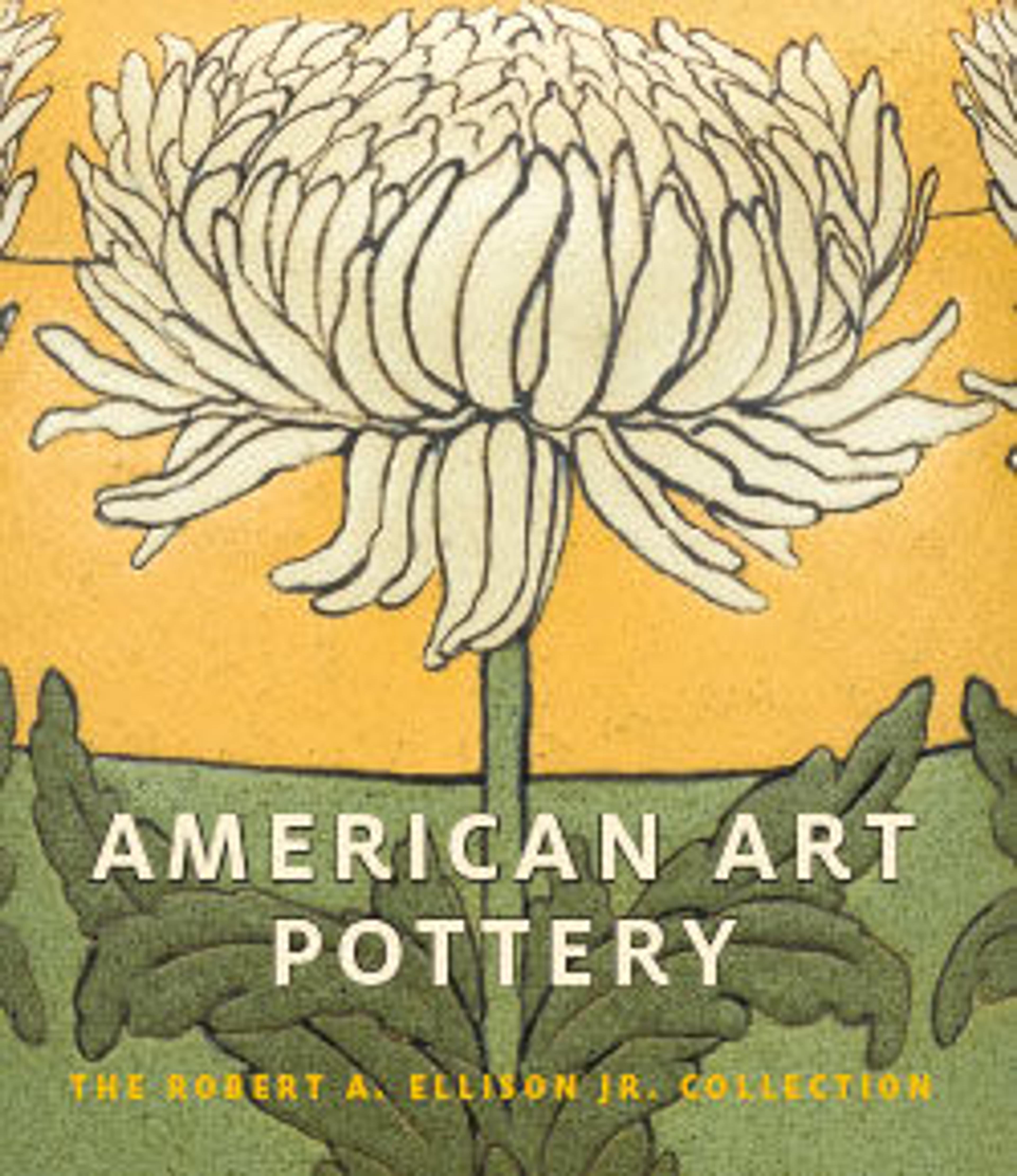Vase
By the late nineteenth century, there was an increasing desire among ceramists, especially women, to become more independent and to involve themselves in all aspects of their craft. Among those, Adelaide Alsop Robineau, working primarily in Syracuse, New York, became one of the most accomplished. She epitomized the studio potter. Working in the difficult medium of porcelain, she relied on her husband to prepare the glazes and fire the kiln. She was especially noted for her pain-staking carved decoration and rich crystalline glazes. She carved very carefully and methodically, patiently cutting away the unfired porcelain with needle-like tools, leaving the design in relief.
This unusually large carved vase, consistent with her ambitious carved work, features decoration of three moose, depicted frontally with a rigid symmetry. Robineau’s interest in the decorative potential of animals prompted her to encourage her students to visit the zoo to study them. As she frequently did, she photographed her vase while still in its bisque state, and published it with a larger group of her work in Keramic Studio in December 1907.Without the obscuring glaze, the design reads more clearly. The animal is set in a landscape with highly stylized trees, a pool of light blue water, and rocks and pebbles. It is possible that Robineau may have seen moose not far from where she was living in upstate New York, and no doubt such a large animal would make a substantial impression. In this case, the rendering has been obscured due to the flowing of the brown and green glazes. She obviously had difficulty controlling them, and they flowed perhaps more than anticipated. Also, perhaps due to other imperfections, she cut the lip down. Nonetheless, the vase’s repeated, stylized design conforms to the design tenets she espoused.
This unusually large carved vase, consistent with her ambitious carved work, features decoration of three moose, depicted frontally with a rigid symmetry. Robineau’s interest in the decorative potential of animals prompted her to encourage her students to visit the zoo to study them. As she frequently did, she photographed her vase while still in its bisque state, and published it with a larger group of her work in Keramic Studio in December 1907.Without the obscuring glaze, the design reads more clearly. The animal is set in a landscape with highly stylized trees, a pool of light blue water, and rocks and pebbles. It is possible that Robineau may have seen moose not far from where she was living in upstate New York, and no doubt such a large animal would make a substantial impression. In this case, the rendering has been obscured due to the flowing of the brown and green glazes. She obviously had difficulty controlling them, and they flowed perhaps more than anticipated. Also, perhaps due to other imperfections, she cut the lip down. Nonetheless, the vase’s repeated, stylized design conforms to the design tenets she espoused.
Artwork Details
- Title: Vase
- Artist: Adelaide Alsop Robineau (American, Middletown, Connecticut, 1865–1929 Syracuse, New York)
- Date: ca. 1907–8
- Geography: Made in Syracuse, New York, United States
- Culture: American
- Medium: Porcelain
- Dimensions: 11 5/8 in. (29.5 cm)
- Credit Line: Gift of Robert A. Ellison Jr., 2017
- Object Number: 2017.357.8
- Curatorial Department: The American Wing
More Artwork
Research Resources
The Met provides unparalleled resources for research and welcomes an international community of students and scholars. The Met's Open Access API is where creators and researchers can connect to the The Met collection. Open Access data and public domain images are available for unrestricted commercial and noncommercial use without permission or fee.
To request images under copyright and other restrictions, please use this Image Request form.
Feedback
We continue to research and examine historical and cultural context for objects in The Met collection. If you have comments or questions about this object record, please contact us using the form below. The Museum looks forward to receiving your comments.
